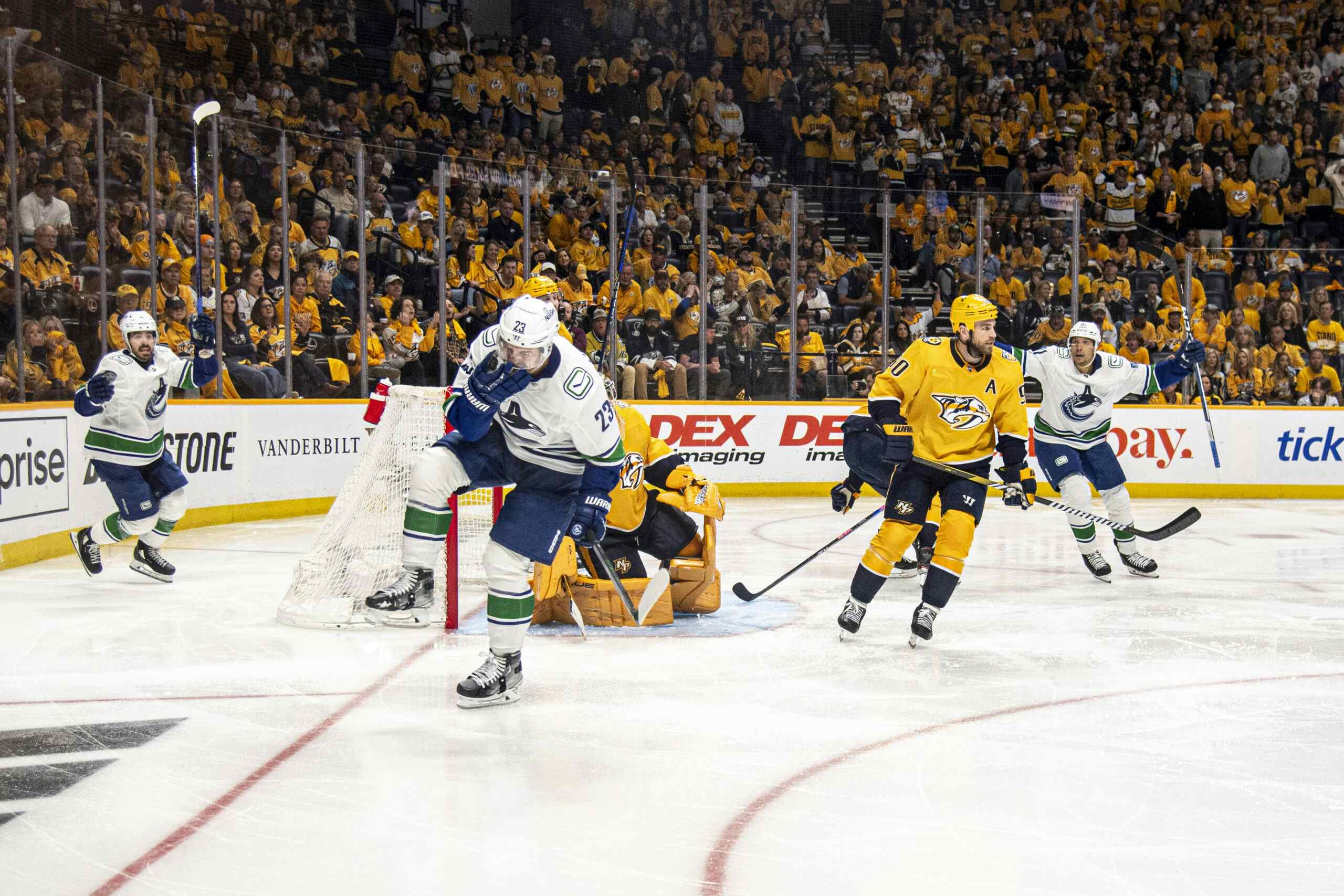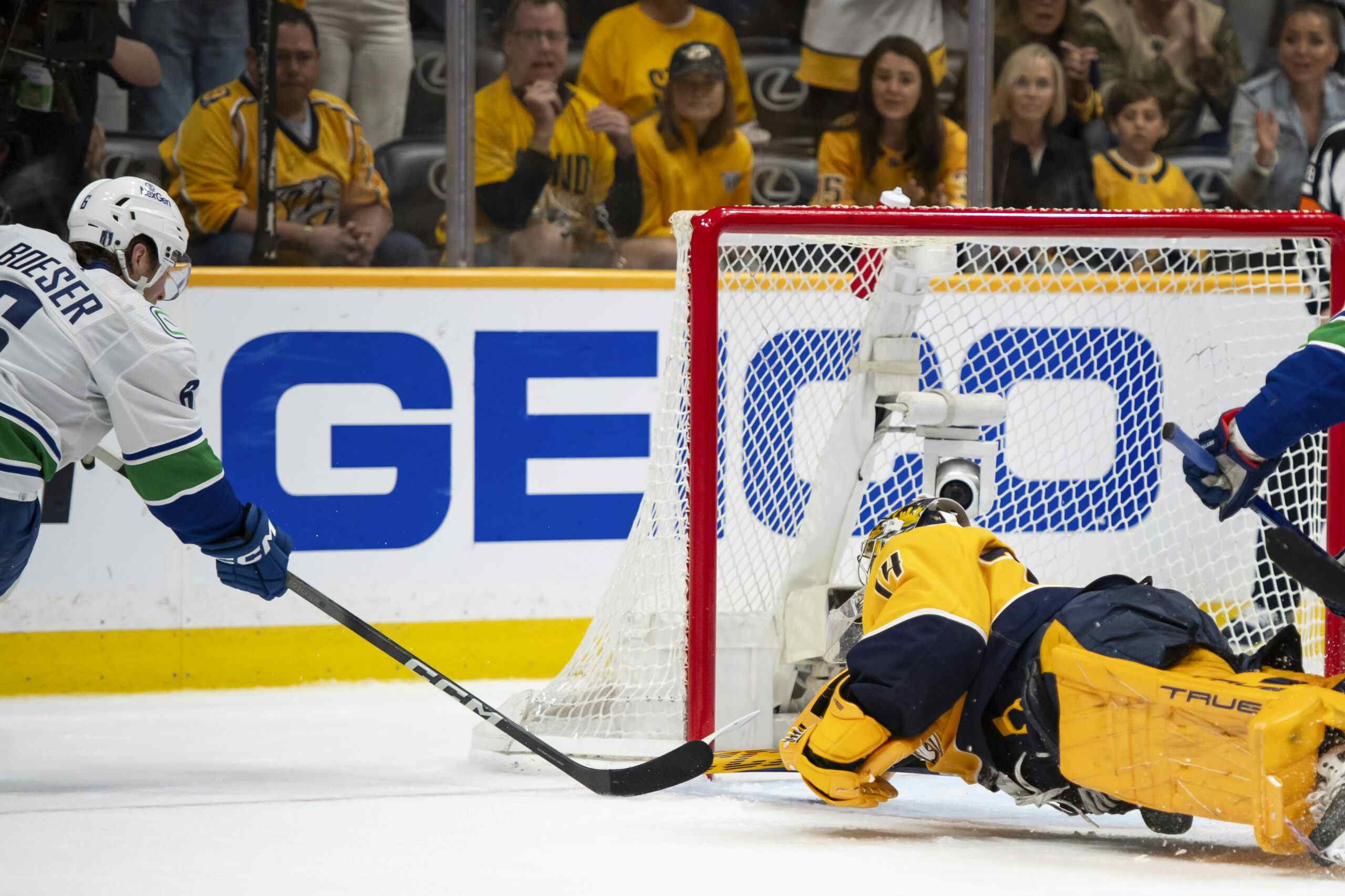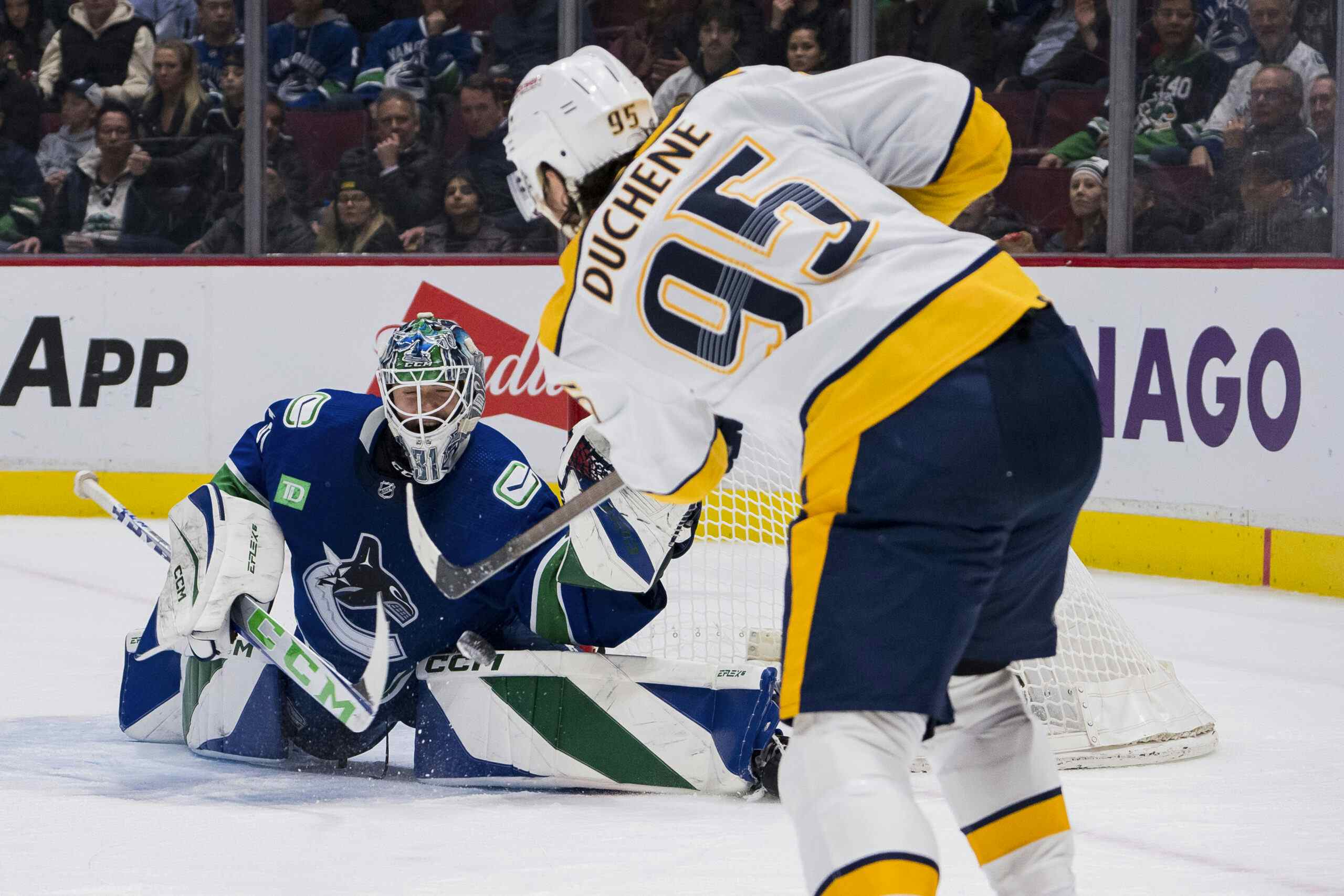A point about Tortorella and shot blocking
By Cam Charron
10 years ago
I’m not sure under what circumstances I wound up listening to the second intermission show on 1040, but there was no talk of any sort of substance. Rather than walking us through strategy or matchups, whoever the host was decided it was time to ask whether John Tortorella had the skills to properly motivate his club when down a goal. I’m not sure what there was of importance to talk about, particularly so early in the season, but the discussion was geared toward possibly the lowest common denominator of fan, or somebody who has no idea what a coach actually does.
If I were a space alien beamed to the Planet Vancouver during the summer and gained an immediate knowledge of the English language, based off what was being discussed in the press, I would know the following two things about Tortorella’s system:
1) He doesn’t like the media.
2) He likes shot blocks.
That is it. That is all I’d have learned about him. Every opinion about Tortorella seems to surround one or two of those things. My alter-ego the space alien would have been very confused. What are Tortorella’s breakout preferences? How does he like to deploy his players? What’s his opinion on sleep therapy? I’d talk to friends casually about hockey and even friends that have nothing to do with hockey media would preface their opinions with how Tortorella treats the media, as if it matters a lick to what happens on the ice. (Reactions were mixed. Some people liked the way Torts treated Larry Brooks)
This brings us to shot blocks.
When it was announced Alex Burrows would be out for a bit after suffering an injury blocking a shot, it compounded with Jordan Schroeder missing the start of the regular season in a walking boot with a broken foot, also while blocking a shot. Since John Tortorella likes blocking shots, his system must be the reason why Burrows and Schroeder are out early on in the season, right?
Well, not really. That was a point Blake Price tried to make:
I guess the theory is that Tortorella is the only coached that ever blocks shots, and Tortorella is the only coach that loses players to injury.
The point isn’t that what Blake said is demonstrably false (scroll below). It was that he had shown nothing to back up his opinion, other than the fact Burrows and Schroeder were hurt in the early going of the season. There is a tonne of information available online about injuries, and shot blocks. I didn’t have time to look at it that day, but I pretty much asked him straight up where he was getting his information from, or whether he had anything to back up his statement that blocked shots cause an increase in injuries.
Logically, it would make sense, yes? Burrows has been hurt to injury. The Rangers had three significant injuries during Tortorella’s time there thanks to blocked shots. Ryan Callahan missed the end of the 2010 season after stepping in front of a Zdeno Chara slapshot, Mats Zuccarello missed the 2012 playoffs with a broken wrist and Chris Drury appears to have hurt his knee blocking a shot back during the 2009 season.
Tortorella’s teams do often lead in shot blocks. They were 6th in the 2013 season, 4th in the 2012 season and 4th in 2011. If you looked at road numbers alone, which are probably much more valuable for properly using real-time statistics, the Rangers are 2nd, 3rd and 4th.
But Tortorella’s teams do not often lead the league in injuries, or come anywhere close to that. The blog Springing Malik tracks two injury-related statistics: man-games lost to injury, as well as CHIP, which I prefer. That’s the weighted salary cap hit of players lost to injury. A season without Alex Burrows would score higher (lower?) on CHIP than Dale Weise because Burrows is a more important player, but they’d be equal in the dubious man-games lost statistic.
Tortorella joined the Rangers during the 2009 season, and coached his first full year in 2009-2010. Between 2009 and 2013, the Rangers are 16th in the NHL in “CHIP”. Since then, the Rangers are 16th in the NHL in CHIP and 20th man-games lost, despite being 4th in blocked shots and 2nd in road blocked shots.
The highest-ranked team in CHIP, Pittsburgh, are 24th in road blocks and 18th in overall blocks.
Look, Blake may have a point on the surface: Putting yourself into a situation to block more shots seems like it would lead to more injuries by shot blocks. Shot-blocking injuries, though, seem to be a very rare occurrence. I posed the question on Twitter this morning and a Rangers fan answered with these players who had seen a significant injury blocking a shot:

Players can also get injured throwing checks. Dan Hamhuis missed the 2011 Stanley Cup Finals after coming up for the worst throwing a hit on Milan Lucic. Players get hurt standing in front of the net on a powerplay—Joffrey Lupul did so last season in Toronto. Goaltenders get hurt stretching for saves, players get hurt racing into the boards for loose pucks and Brent Sopel was once incapacitated infamously after picking up a cracker and straining his back.
With 120 team seasons available (I pro-rated the 2013 season by dividing CHIP, man-games and blocked shots by dividing by 48 and multiplying by 82) I ran some linear regressions to test the correlation between injuries and blocked shots.
The x-axis is CHIP, or man-games lost, and the y-axis is blocked shots. I ran four different regressions. As always, an r-squared of 1 implies perfect correlation, and an r-squared of 0 implies no correlation:




This data doesn’t conclude that there’s no risk in blocking a shot. But it can lead us to these other plausible conclusions:
- Getting injured while blocking a shot is a rare event, based on the thousands of blocked shots every season resulting in few injuries.
- If Tortorella’s players open themselves up to greater risk blocking shots, a different element of Tortorella’s strategy in New York protected his players.
- Perhaps the player’s training habits, not blocked shots or elements of a coach’s strategy, are the determining factors of injury.
There is a lot we don’t know about injuries and I’m curious on it. You hear about players being “injury prone” but I have yet to see studies done on whether a player that has suffered a certain injury in the past is more likely to suffer a similar injury.
I don’t think that Tortorella’s system opened up his Ranger players to any extra risk they wouldn’t otherwise face in New York when he was there. Hockey is an inherently dangerous game played at a high speed with 200 lb players carrying clubs and blades attached to their shoes. I’m generally anti-shot blocking because in most cases, you’re blocking a defenceman’s shot, and high shot block totals indicate you’re playing much of the game in your own end.
The most interesting thing I’ve read comes from Tyler, who showed that teams that block a higher percentage of forward shot attempts are less likely to see forwards take those attempts. I think as we learn about Tortorella’s system it’s not only going to be about “does his team block shots?” but about the situation, whose shots are being blocked, and whether that leads to a better breakout or not.
During his time in New York, the Rangers were 16th in Corsi and 11th in Fenwick. They went from a negative possession team to a positive one when you included blocked shots. I noticed this also during the 2012 Memorial Cup in Shawinigan with the London Knights. The Knights, despite losing the Corsi battle in each of their games, tallied more scoring chances. Simply blocking high volume shooters isn’t the answer to the shot blocking riddle. I think there’s more to it.
It’s still far too early to judge anything about Tortorella’s tenure in Vancouver, but it’s worth noting that Burrows isn’t the only player to be placed on the injured list after blocking a shot. I think we need to recognize that when things happen with very little frequency, such as injuries due to a shot block, you can probably attribute it more to randomness than anything else.
Remember, even the 2010 Canucks, who blocked the fewest shots (not counting the 2013 season) of the seasons Tortorella was in New York, blocked 57% of the shots the 2010 Panthers did, who blocked the most. A standard deviation is about 116 blocks in a season. Even the teams that block the lowest numbers of shots block a high amount. You’d have less injury risk if you never blocked a shot, but that’s not likely to happen anytime soon.
Recent articles from Cam Charron





